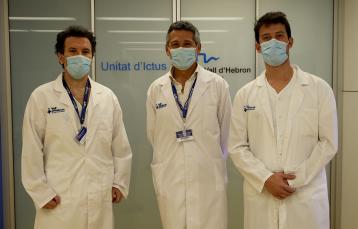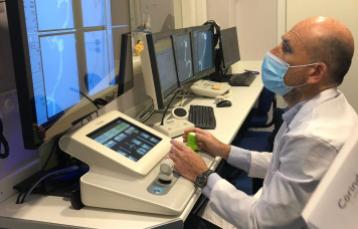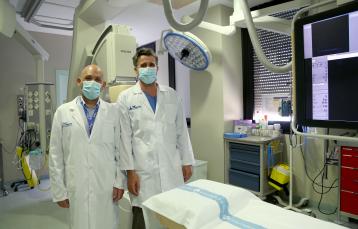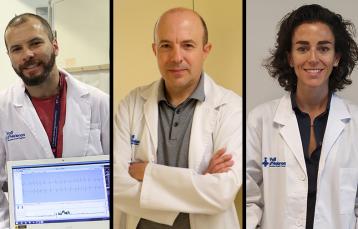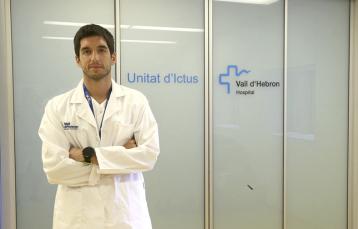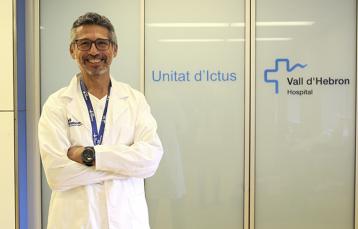Vall d'Hebron has published the results of a study that should open a new avenue for stroke patients. The research provides data that show that the direct transfer of stroke patients to the angiography room without going through the usual circuit allows to reduce the time of action, a basic aspect for the evaluation of patients with this type of pathology. The study has been published in the journal JAMA Neurology and led by Dr. Manuel Requena, a member of the Stroke Unit at Vall d'Hebron University Hospital and a researcher in the Stroke Research Group at the Vall d'Hebron Research Institute (VHIR).
ANGIOCAT is the first randomised clinical study worldwide to publish data of these characteristics and demonstrates the solvability of the model. The research, carried out on 466 patients with acute stroke, established two circuits among the patients: one with the usual circuit - making an initial diagnosis from a CT scan and subsequently performing an angiography - and one without the CT scan thanks to the improved image quality of the equipment used to perform angiographies.
Despite the limitations of this machinery compared to CT machines, the data show that the reduction in the number of passes leads to a reduction in time. In this sense, the group with the new treatment took an average of 18 minutes until the puncture and 57 minutes from the portal to the reperfusion. In contrast, the usual treatment took a total of 42 minutes until the puncture and 84 minutes to reperfusion. On the other hand, the severity of disability was also reduced, although the aspects related to patient safety were similar between the two groups.
Similarly, the new methodology is also beneficial for the internal functioning of the hospital. The elimination of steps makes it possible to reduce the volume of work in the emergency department and this makes it possible to improve the results. At the same time, the increase in the volume of patients and the reduction of the reaction time is a major effort on behalf of the professionals of the infirmary and interventionalists. "This study is the first prospective evidence that direct transfer to the arteriography room leads to more and faster treatments, improving the prognosis of stroke patients", explains Dr. Requena.
The second leading cause of death worldwide
The protocols in current use in Catalonia until now establish that the emergency service must communicate with the centre that will receive the patient, indicating the patient who is presumed to have an acute stroke and the number of hours since the first symptoms. Patients can be classified as primary admissions or secondary transfers from a primary stroke centre. In the case of the study, once they arrived at the hospital, they were assigned to one of the two groups.
The study finally included 174 patients with an average age of 73.4 years admitted between September 2018 and November 2020. 44.8% of the total sample was made up of women and the remaining 55.2% was made up of men. During that period, 2111 patients were admitted with a diagnosis of stroke to Vall d'Hebron. Of these, 426 met the study criteria.
Globally, stroke affects 1 in 4 adults over the age of 25 during their lifetime. This figure places the pathology as the second leading cause of death and one of the main causes of long-term disability. The evolution of stroke patients is closely related to the time they take to receive treatment: every 30 minutes it takes to start treatment the chances of obtaining a correct diagnosis are reduced by 14%. In this sense, every hour of delay the brain ages 3.6 years compared to a normal brain.
The results come weeks after the start of the WE-TRUST study (Workflow optimization to rEduce Time to endovascular Reperfusion for Ultra-fast Stroke Treatment), an international multicentre study with the participation of Royal Philips and involving patients from Vall d'Hebron. This procedure will analyse the impact of the "Direct to Angiography" approach, which will be possible thanks to the angiography room tomography technology developed by Philips.
